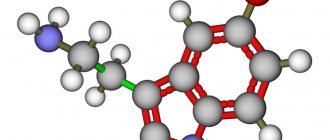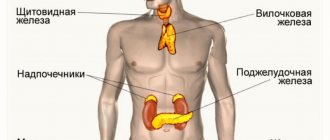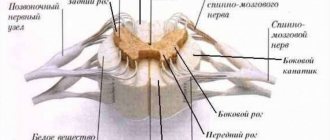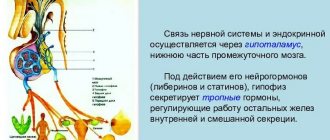We continue a series of publications devoted to neurosurgical diseases. The project was prepared jointly with the MBOO for helping children with neurosurgical diseases “He Needs You.” We want these “terrible” diagnoses not to put pressure on parents and not to take away their hope. In our publications, the best specialists and experienced parents will talk about ways to cure and overcome, give recommendations and show that life can go on with any, even such complex, diseases.
The rate of surgery for indications such as brain cysts has increased not because morbidity has increased. An increasing number of X-rays have revealed, often quite accidentally, cysts in the brain. Or other pathologies described by specialists as cysts, but which are not cysts. And the risk minimized during such operations and their good financing have led to the fact that cysts are operated on when necessary and when, to put it mildly, it is inappropriate.
So, let’s figure out what a cyst is, how to distinguish it from a fake cyst, and which particular cyst requires surgical treatment, together with Dmitry Yuryevich Zinenko , Doctor of Medical Sciences, Head of the Department of Neurosurgery at the Scientific Research Clinical Institute of Pediatrics named after Yu.E. Veltishchev.
What is the pineal gland?
The content of the article
The pineal gland is a small organ located in the brain. It is similar in size to a grain of rice (5 to 8 mm) and its name comes from its cone-like shape.
Pineal gland
Despite its location, the pineal gland is not covered by the blood-brain barrier and its rich blood supply is similar to that of the kidneys. It is noteworthy that her complete education takes place between the ages of 1 and 2 years. After this time, the organ stops developing. Its mass increases only after puberty.
The pineal gland consists of several groups of cells divided into so-called lobules. Connective tissue septa separate individual lobules from each other.
The pineal gland consists of:
- Pinacocytes, or pineal gland cells, contain pleomorphic cell nuclei consisting of smaller nuclei;
- Glial cells with a network of glial fibrils - these cells, together with nerve cells, form the nervous system and constitute a layer of insulating cells;
- Nerve cells with nerve fibers - nerve fibers come from neighboring parts of the brain;
- Brain sand - this part consists of round and slightly yellow cells. In addition, it contains calcium phosphates and carbonates.
In ancient times, philosophers emphasized that the pineal gland is the place where the soul influences the body. It is often called the most mysterious organ of the human body, because it is it that has the greatest influence on the human psyche.
This single, odd element of the brain, located exactly in its center, is very often called the “third eye.”
Possible consequences
Speaking about the consequences of pinealoma, it is necessary to clarify. In terms of risk to life, this is far from the most dangerous disease. With proper medical supervision, it is unlikely that a patient can be brought to such a state.
But the symptoms of a pineal cyst can seriously affect the quality of life:
- regular attacks of headache and nausea;
- dizziness;
- visual impairment (temporary or permanent);
- inadequate sleep.
These are just the main problems that you will have to face.
Changes in lifestyle can be so serious that men with pinealoma are not threatened with military service - they will not be accepted into the army. According to article 23 “Organic, hereditary, degenerative diseases of the central nervous system and neuromuscular diseases.”
What are the functions of the pineal gland?
The pineal gland is an endocrine gland. This means that the hormones it produces enter the bloodstream. Thus, the gland regulates the functioning of certain tissues and organs.
Located at the back of the diencephalon, the gland connects to the telencephalon, which is responsible for most mental processes.
The main task of the pineal gland is primarily the production of melatonin. This hormone has many functions in the central nervous system, the most important of which is responsible for the circadian cycle. When exposed to light, melatonin synthesis is suppressed, and when we are in the dark, melatonin synthesis increases - this affects the rhythm of sleep and wakefulness.
Melatonin production
In addition, the pineal gland is responsible for the release of growth hormone, thyroid-stimulating hormone, which is responsible for regulating the thyroid gland, and adrenocorticotropic hormone, which regulates the adrenal cortex.
In addition, the pineal gland is responsible for the release of sex hormones that regulate the maturation process.
The most important functions of the pineal gland include:
- regulation of blood pressure;
- coordination of the central nervous system;
- regulation of the human circadian system through the production and secretion of melatonin and serotonin;
- informing the body about the need to go to bed, causing a feeling of drowsiness;
- informing the body about its readiness to engage in everyday activities;
- release of certain groups of growth hormones; TSH; ACTH;
- influence on the level of melanin (skin pigment) through melatonin;
- responsibility for autumn and winter depressions;
- maintaining the body's ability to fight cancer cells;
- strengthening the immune system;
- influence on metabolic changes;
- strengthening bones (decreased pineal hormone levels significantly weaken bones);
- slowing down the aging process by regulating sleep.
The pineal gland also produces substances that are largely responsible for the feeling of euphoria. Scientists believe that it is also responsible for hallucinatory states. But most importantly, the hormones secreted by the pineal gland give a person joy and a sense of satisfaction, and also reduce depressive mood, which is a very important element of everyday life.
General information about pathology
A cyst is a fluid-filled cavity located in the substance of the brain or its membranes. When the pathology is small in size, it has a subclinical course and is diagnosed accidentally during a neuroimaging examination of the head. Since the intracranial space has limited dimensions, with a significant increase in the volume of the formation, intracranial hypertension develops.
The size of the cavity with liquid is largely determined by the compensatory capabilities of the formation and its localization. Due to the pliability of the skull bones in children at an early age, the cyst may not manifest itself for a long time.
The formation can be found in people of different ages, both in infants and in elderly patients. Even if the fluid cavity is congenital, it can make itself felt only by the age of 30-50.
According to generally accepted practice, treatment is prescribed only in the case of a pronounced clinical picture and when complications develop. If the cavity with fluid is frozen or slowly progressing and its volumes are insignificant, a wait-and-see approach is chosen, which involves regular monitoring of the patient.
Pineal hormones
Pineal hormones have a very strong influence and regulate the lifestyle of every person. An analysis of the functions of the individual hormones secreted by this gland in everyday life provides convincing support for the assertion that the pineal gland is the place where the soul interacts with the body, and the body with the soul. What hormones does this “secret” gland secrete?
The two most important hormones produced directly by the pineal gland are:
- Serotonin
– this hormone is released throughout the day. First of all, it has a calming effect, but too low its level causes depression, anger and even aggression. Serotonin additionally provides a signal to prepare for sleep. - Melatonin
– produced by the pineal gland at night. It makes people feel sleepy. But the light that reaches melatonin definitely lowers its levels. So, this is the information that you need to get up after the night. - DMT (dimethyltryptamine)
– this hormone is produced by the cells of the pineal gland. It is a type of psychedelic psychoactive substance. May cause hallucinations and strong visual effects.
By producing these hormones, the pineal gland is entirely responsible for regulating each person's circadian system. The effect of the hormones of this gland is most strongly felt when changing time zones (the famous “jet lag syndrome”). Their deficiency additionally causes appetite or metabolic disorders.
Jet lag syndrome
The pineal gland not only produces its own hormones, but also participates in the production of others. These include:
- Vasopressin
– stimulates growth levels. It also regulates the density of urine. The largest amount of this hormone is produced during sleep. Vasopressin also stimulates the production of cortisol, and the pineal gland secretes this hormone from the pituitary gland. - Somatropin
is the name of growth hormone. The pineal gland is involved in its production, and the highest levels of this hormone occur during puberty. - Thyroid hormones
- the small pineal gland secretes melatonin and also regulates the thyroid gland by stimulating thyroid-stimulating hormone (TSH). - Gonadotropins
- these hormones stimulate the activity of the human gonads (ovaries and testes). The pineal gland plays a very important role in the process of puberty and supports the functioning of these organs, - ACTH
, also known as the stress hormone, the pineal gland is involved in the production of this hormone. As a result of its action, more cortisol is released, and the pineal gland regulates this process. Thanks to these actions, the body properly prepares for awakening.
Classification
Classification by location:
- Cerebral (intracerebral). It is formed in areas of dead brain tissue in the internal structures of the brain.
- Arachnoid. It is formed as a result of the accumulation of cerebrospinal fluid in places of adhesions formed as a result of inflammatory processes and in places of their congenital duplication. The advantage is localized in the meninges.
The following types of brain cysts are distinguished separately:
- dermoid;
- colloidal;
- choroid plexus;
- pineal gland.
According to its genesis, a cavity with fluid can be congenital or acquired. In turn, congenital is divided into colloid and dermoid, and due to its formation into post-infectious, post-traumatic, post-stroke and echinococcal.
Melatonin, the most important hormone produced by the pineal gland
Melatonin, synthesized by the pineal gland, acts as a “signpost” to our biological clock. The cycle in which it is secreted by the pineal gland affects sleep at night. Its proper release is very important for health. However, with today's lifestyle, this rhythm is very easy to disrupt.
So-called “night breaks” or night shifts lead to a decrease in the release of this hormone from the pineal gland. Not only does this lead to later problems falling asleep, but it can also increase your risk of diabetes, prostate and breast cancer.
As we age, the activity of the pineal gland decreases, which can lead to problems falling asleep in older people. Therefore, for insomnia, medications containing melatonin are recommended. However, it should be remembered that medications with melatonin should be used only after prior consultation with an endocrinologist.
Reasons for appearance and development
There are several reasons for the development of this pathological condition, but the main ones are:
- Blockage of the pineal gland excretory duct In this condition, the secretion of the pineal gland, which contains hormones and should be released into the blood, cannot leave the gland due to obstruction of the outflow.
The reasons for this may be:- tumor growths compressing the excretory duct from the outside
inflammatory diseases of the brain substance (encephalitis)
- autoimmune processes
- blockage of the excretory duct by a water bubble (for example, with metabolic disorders)
- anatomical features of the body (winding or narrow duct)
- production of too viscous secretion by the pineal gland
- Development of parasites There are a number of parasites, for example, Echinococcus, the larvae of which move through the bloodstream throughout the body and can settle in some organs. When a larva enters the pineal gland, it forms a capsule around itself and is gradually filled with metabolic products of the worm. This version of the cyst is more dangerous, since in this case the increase in the size of the formation occurs much faster. Fortunately, pineal echinococcosis is quite rare.
- Stroke A cavity in the epiphysis can form during a hemorrhagic stroke. Most often, this occurs in people suffering from arterial hypertension and having problems with the blood vessels of the brain (for example, atherosclerosis). In this case, the vessel ruptures and blood begins to flow into the surrounding brain tissue. Afterwards, the blood clot is replaced along the periphery by connective tissue, forming a bubble with liquid. A similar mechanism of cyst formation is observed in traumatic brain and birth injuries.
- Congenital cysts In very rare cases, a cyst may appear in utero. This is possible in case of abnormal development of the fetus, after infectious diseases in a pregnant woman, or in case of fetal hypoxia.
In all these conditions, the lumen of the duct decreases, which causes the formation of a cyst. It is worth noting that the size of the tumor remains quite small.
Pineal gland diseases
The main disease that can affect the pineal gland is a tumor of the pineal gland. When tumors (or cysts) appear, most often, but not always, the activity of this organ is completely suppressed.
The most common symptoms of a pineal tumor are:
- dizziness and headaches;
- vomiting, nausea;
- impaired vision and balance;
- loss of consciousness.
Dizziness
In young people, tumors on the pineal gland can cause premature puberty.
Magnetic resonance imaging is performed to detect changes in the pineal gland. And surgery is required to remove them.
Symptoms that appear
The main problem of symptoms and diagnosis is that:
- symptoms are nonspecific;
- symptoms vary greatly depending on which areas of the brain the cyst presses on and how much it inhibits the movement of cerebrospinal fluid (this begins when the size of the formation exceeds 5 mm);
- signs begin to actively appear in most cases when the tumor already occupies at least 50% of the epiphysis (a small cyst is almost guaranteed to be asymptomatic).
With cystic formation of the pineal gland, the following symptoms may be observed:
- headache, usually not similar to migraine (spontaneous, unstable, short-term attacks);
- visual disturbances (double vision, blurriness, decreased peripheral vision);
- attacks of nausea or vomiting, especially after sleep;
- violations of spatial orientation and coordination;
- gait disturbance;
- changes in the functioning of the cardiovascular system (unexpected tachycardia, attacks of palpitations);
- constant drowsiness.
1-2 symptoms described cannot yet indicate an appropriate diagnosis.
The presence of at least 4 symptoms, regularly and for a long time (several months), is of clinical significance.
If the cyst is caused by echinococcus, then additional symptoms appear (due to the toxicity of the parasite’s excretion products):
- partial paralysis and paresis (both lower and upper extremities);
- regular numbness and tingling;
- psychoneurological disorders - depression, anxiety disorders.
Even with all the listed symptoms, it is very difficult to make a correct diagnosis. But some little things may indicate this pathology. For example, a headache in this case is very poorly or not at all relieved by NSAIDs.
Pineal cyst
A pineal cyst is quite often diagnosed as a disease.
A pineal cyst is a very benign tumor lesion that does not spread to other organs. This cyst is filled with inflammatory cells (leukocytes, lymphocytes and macrophages). Usually surrounded by delicate epithelium. It is difficult to identify clear reasons for its formation. Most often it occurs in young people when the pineal gland undergoes many transformations. This causes some changes in the organ.
A pineal cyst is asymptomatic, but when it puts too much pressure on the brain structures, the following symptoms may appear:
- long-term migraines (up to 72 hours);
- problems with proper vision, squint;
- sleep disturbance;
- disturbances of wakefulness.
Prolonged migraine
This disease is very often detected only by computed tomography or magnetic resonance imaging, carried out in the diagnosis of other diseases. Treatment for pineal cysts mainly involves eliminating symptoms and pain. This condition should be regularly monitored by a doctor. Very often the cyst resolves or significantly decreases in size, but if the lesion grows, surgical intervention is required.
Treatment methods for liquor cysts
The most common indications for surgical treatment of a cyst: it grows too quickly, causes seizures, causes neurological deficits, the cyst interferes with the child’s development.
The main, safest and most effective method for treating cerebrospinal fluid cysts today is fenestration. That is, dissection of the walls of the cyst for communication between the cyst and other cerebrospinal fluid spaces, where this accumulated fluid is normally located.
It is possible to install a stent (catheter) connecting the cavity of the cyst and the ventricles. It happens that the operation turns out to be ineffective and forces you to use another method of treatment - bypass surgery.
Shunt surgery (today practically not used as a primary method of treatment), although it allows you to quickly reduce the size of the cyst, but creates a lifelong dependence on the shunt system. If this method can be avoided, neurosurgeons try to avoid it.
However, when treating young children (up to two years old), as well as when treating cysts that were complicated by hemorrhage, shunt operations are inevitable.
In general, surgeries to treat cysts have a low risk of complications in the hands of experienced doctors. This operation involves hospitalization for only three to four days and several subsequent consultations with a surgeon. Deviations from this rule occur only in 10% of cases.
Most often, in such a situation, endoscopic surgery is used, but in some cases, an open microsurgical approach is more correct. An uninitiated person will not see the difference after the operation; the size of access to the brain cavity will be the same. In this case, it is not so important for the patient which instrument is used to perform this operation. It is important to make the patient feel better.
Calcification of the pineal gland
Calcification of the pineal gland means the appearance of calcifications on the pineal gland. The pineal gland is quite a strong magnet for fluoride and other harmful elements such as phosphorus and mercury. Excess fluorine and phosphorus disrupts the mineral balance of the body.
Over time, a rather hard limestone crust forms around the gland, which in some sense limits the normal functioning of the organ. The more fluoride deposits there are on the pineal gland, the more severe the calcification.
Symptoms of calcification include:
- severe nausea, vomiting;
- frequent headaches;
- problems with raising the eyeballs.
People with pineal calcification tend to be pessimistic.
Proper diet plays a huge role in cleansing the pineal gland. You need to eat plenty of vegetables and fruits, avoid alcohol and smoking, and avoid fluoride.
Eating plenty of vegetables and fruits
This type of calcification can cause many diseases such as dementia, Alzheimer's disease, Parkinson's disease and multiple sclerosis.
Features during pregnancy
Pregnancy is always a very vulnerable period. In this case, there are typical symptoms of pregnancy:
- morning sickness;
- dizziness;
- headache;
- malaise;
- appetite disorders.
The picture may be very similar to a cyst in the epiphysis.
If a pinealoma is discovered during pregnancy, then ideally it should be ignored for the entire period of pregnancy. Pregnant patients have contraindications to most medications.
And there is no question of surgical intervention on the brain (except if the mother’s life is in danger).
Prevention of pineal gland diseases
There is currently no proven way to protect yourself from a possible pineal tumor. However, this does not mean that we cannot take steps to help the pineal gland function properly. First of all, you should start with a routine - you can’t sit for a long time at night. Adjusting your routine will help you get the right concentration of melatonin, which will help you fall asleep normally.
Additionally, as with any other organ, it is important to follow a proper diet and avoid all types of toxins, including alcohol.
Another important point in the prevention of pineal gland diseases is taking special medications with magnesium and vitamins. All this should be prescribed by an endocrinologist.
ONLINE REGISTRATION at the DIANA clinic
You can sign up by calling the toll-free phone number 8-800-707-15-60 or filling out the contact form. In this case, we will contact you ourselves.
If you find an error, please select a piece of text and press Ctrl+Enter
Preventive actions
It has been determined that hypoxia of the central nervous system is an almost unambiguous factor.
Therefore, one of the prevention options is regular moderate physical activity in the fresh air (always in the fresh air), and sometimes taking vasodilating drugs.
Since echinococcus is one of the causes, it is necessary to observe appropriate sanitary safety measures.
Forecasts
In most cases, a frozen cavity with liquid of insignificant size does not bother the patient and does not cause any symptoms. In other cases, with adequate and timely treatment, the outcome is favorable.
In rare cases, patients after surgical removal of a cyst experience a residual moderate-to-severe liquor-hypertensive symptom. If a focal neurological deficit develops, it persists after treatment.
With the removal of the cyst, epileptic paroxysms disappear, but often appear later. This is justified by changes in the operated area of the head, in particular the formed adhesions. Secondary epilepsy is practically uncontrollable by anticonvulsant therapy.
Brain cyst
The growth of the formation at the initial stage is in most cases accompanied by symptoms of intracranial hypertension. Patients constantly complain of nausea, which has nothing to do with food, deterioration in general health and decreased performance, constant cephalalgia and pressure on the eyeballs.
In some cases, the main symptoms include a constant feeling of pulsation in the head, sleep disturbance, mild hearing loss, dizziness, motor dysfunction, fainting and tremors of the limbs. Possible visual impairment, namely double vision, visual hallucinations, deterioration of visual acuity. With high intracranial hypertension, the patient is worried about constant vomiting.
There are cases when the first signs indicating a cavity with fluid are the first occurrence of epileptic paroxysm. Subsequently, epileptic seizures recur. Paroxysms can take the form of focal Jacksonian epilepsy or absence seizures and be of a primary generalized nature.
Compared to general cerebral manifestations, focal symptoms are observed in fewer cases. These may be sensory disorders, monoparesis and hemiparesis, brainstem symptoms. The latter include dysarthria, eye movement disorders, and swallowing disorders.
One of the complications of formation is cyst rupture. In this case, hemorrhage due to rupture of the vessel, compression of the brain, the formation of an epileptogenic focus and occlusive hydrocephalus are possible.
In the congenital form of the cyst, episyndromes and intracranial hypertension are recorded at an early age. Education in the brain can cause the child to develop mental retardation and mental development disorders.









